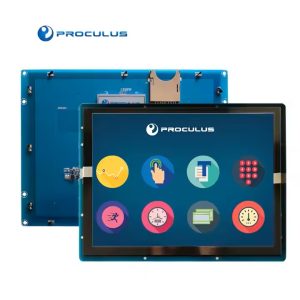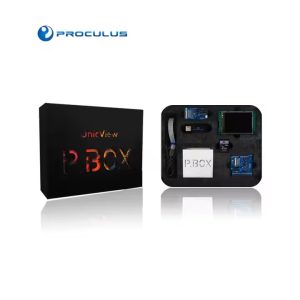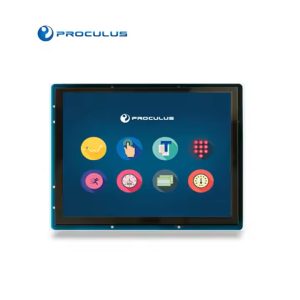How to Select the Viewing Angle of 4.3 Inch LCD?
The 4.3 inch LCD has always been a widely used size. We all know that each LCD screen of different size has many different specifications and parameters, and there are a lot of things to pay attention to when choosing. Next, Proculus Technologies Co., Ltd. will discuss this issue with you.
I. Overview of the viewing angle of the 4.3 inch LCD
The visual angle of the screen refers to the maximum angle required for the image quality acceptable to the user. LCD screens reflect differently in all directions. In the horizontal direction, the smaller the angle between the line of sight and the screen, the lower the brightness; when the brightness drops to 50%, the viewing angle is defined as the viewing angle. The larger the viewing angle of the screen, the larger the viewing range. If you look at the image within the viewing angle, the brightness is satisfactory; when you look at the image outside the viewing angle, the brightness is not enough. Its concept is closely related to the phenomenon of grayscale inversion. When the user exceeds a certain angle (viewing angle), a sudden change in the color of the display can be noticed, which mainly occurs with the dominant position of gray in the display image.
The viewing angle of the 4.3 inch LCD is measured from the normal axis of the display in each of the four directions. In theory, the maximum angle is 90 °, and the angle in each measuring direction may be different. The three-dimensional angular range is called the observation cone.
II. Viewing angle types of 4.3 inch LCD
The most popular matrix types of 4.3 inch LCD screens on the market are TN, VA, MVA and IPS.
TN LCD is the most cost-effective technology. The angle is mostly narrower than other types, but the low price and short matrix reaction time make up for the smaller visual taper. In order to expand the visual angle, an O-shaped film can be added to the display screen. When buying this kind of UART TFT ICD, you should always pay attention to the viewing direction indicated by a small perspective. It describes in which direction the user should look at the display screen.
VA and MVA 4.3 inch LCD screens are characterized by short reaction time, wide viewing angle and high contrast. We classify them between the TN and IPS types.
IPS matrix technology not only has most of the advantages of VA, but also has very good color restoration and the highest visual angle on both axes. The most common disadvantage of IPS is that the black color depth is lower than the VA type.
III. What perspective does my 4.3 inch screen module need?
If the project requires a high visual angle, choose an LCD screen with a full viewing angle (178.5 °~ 180 °per axis). In this case, you should look for MVA and IPS LCD screens. When price is the most important factor, you can find a cost optimization in the purchase of TN display.
Remember to choose the right direction for your application. The simplest rule is that when the user looks from the top, choose the 4.3 inch screen at 12:00, and when looking from the bottom, select the display at 6:00.
Suzhou Proculus Technologies Co., Ltd. is a leading innovator in the embedded device industry, focusing on multi-functional thin film transistor liquid crystal displays, including general asynchronous transceivers and Android solutions. If you are interested in our products, you can consult our official customer service online, and we will provide you with quality service!

 English
English


